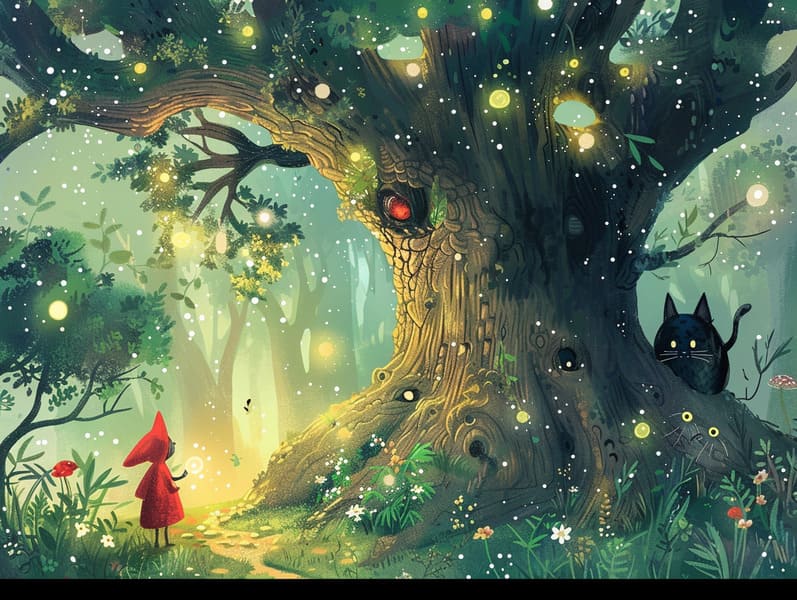Understanding the Legacy of Short Fairy Tales and the Steadfast Delight.
Understanding the Legacy of Short Fairy Tales and the Steadfast Delight.
Blog Article

Classic fairy tales have legendary status. These stories have been shared from one generation to the next long before they were ever transcribed. They sprang from a variety of backgrounds, including Asian traditions. They were initially told among adults, often carrying themes and messages concerning the societal norms and beliefs of the time.
Jacob and Wilhelm Grimm, Jacob and Wilhelm Grimm, were among the first to compile many of these beloved stories. Their collection, "Grimm's Fables," included classics like "The True Bride," "Little Brother and Little Sister," and "Snow-White and Rose-Red," which have since become essentials in the world of classic fairy tales. Similarly, the Danish author's magical narratives, such as "The Story of the Little Mermaid," and "The Ugly Duckling," have gained the love worldwide, establishing their place in the pantheon of beloved fairy tales.
Despite their historical roots, fairy tales remain as important as ever, especially as bedtime stories for kids. These enchanting tales are now available in many formats, including vividly illustrated books, fantastical animations, and online fairy tales.
Their unwavering allure can be connected to several charming aspects:
Key Lessons: Classic fairy tales often whisper important moral lessons. Narratives like "The Boy Who Cried Wolf" teach the importance of truth, while "The Hare and the Tortoise" show the virtues of tenacity and meekness. These narratives offer kids clear distinctions between virtue and vice, molding their moral compass in a mild yet meaningful way.
Sympathy and Perception: Old fairy tales frequently illustrate beings facing obstacles and hardships, urging children to identify with their struggles and support their triumphs. For instance, "The Tale of Beauty and the Beast" conveys the value of looking deeper to comprehend the true being of a character, advancing kindness and understanding.
Cultural Insights: Many classic fairy tales are saturated in the cultural contexts from which they originated. Discovering these tales can provide informative snapshots into different heritages, fostering a sense of global understanding and awareness.
Imagination and Creativity: The fantasy-filled elements in ancient fairy tales—enchanted forests—awaken children’s innovations. These stories lead readers to imaginary realms, enhancing inventive dreams and a sense of awe that lasts a lifetime.
Classic fairy tales are not only entrancing but also edifying. They act as magical tools in developing various thinking and feeling skills in kids. When traditional fairy tales are voiced, they nurture language proficiency by showing new language and sophisticated sentence structures. This practice also fosters listening abilities and mental focus, as young ones focus on every detail, ready to see what happens next.
Furthermore, conversing about the themes and characters of old fairy tales can improve evaluative skills and intellectual skills. Young readers are shown to detect patterns, foresee events, and know cause and effect. These contemplations also contribute to little ones verbalize their thoughts and feelings, enhancing their emotional intelligence.
In today’s information age, the presence of online fairy tales has made these tales more attainable than ever. Digital sites and online apps present large libraries of old fairy tales that can be seen or listened to anytime, anywhere. Fairy tales narrated are particularly well-received, giving an fascinating method for young ones to relish these spellbinding stories. Narrated books and narrated videos move characters and settings to life, often accompanied by fantastical music and musical scores that augment the storytelling experience.
The lasting appeal of traditional fairy tales lies in their ability to adjust to modern times while maintaining their key morals. Contemporary reimaginings of these stories often incorporate more inclusive figures and modern settings, making them familiar to today’s audience. However, the key lessons of boldness, compassion, and justness remain unchanged, continuing to connect with kids of all ages.
Fairy tales also offer a sense of assurance and knownness. They make accessible a organized narrative with a straightforward beginning, middle, and end, often closing with the finalization of conflicts and the triumph of rightness over wrongness. This steadiness can be heartening for the young, giving a sense of consistency in an always shifting world.
Traditional fairy tales continue to enchant and guide new generations, maintaining their magic and importance in modern society. As children's bedtime stories, they supply a perfect blend of fantasy and learning, enhancing moral values, empathy, and creativity. The availability of online storybooks and the well-received status of fairy tales voiced warrant that these old tales remain within reach to new generations.
By defending and broadcasting these find it here tales, we continue to exalt the rich tapestry of legends and cultural heritage. Whether you are reading a vividly illustrated book, browsing a cyber collection, or listening to an sound book, the allure of traditional fairy tales is always within reach. These fairy tales remind us of the endless power of narratives and its ability to draw us together across epochs and places.
No matter if you are perusing a artistically illustrated book, browsing a digital collection, or playing an narrated book, the magic of timeless fairy tales is always within reach.
These fairy tales highlight of the perpetual influence of storytelling and its ability to bring us together across eras and regions, weaving a spell that charms and informs alike.